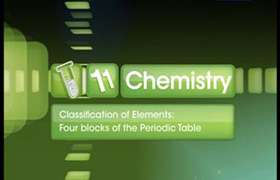CBSE Class 11-science Answered
Orbital:
The three dimensional region in the space around the nucleus in which the probability of finding the electron is maximum is called orbital.
An orbital can accomodate a maximum of 2 electrons only.
The probability distribution of charge cloud in different orbitals is different.This gives them different shapes.
Except s-orbital all other orbitals are directional in nature.
Shells:
According to Bohr’s atomic model, electrons revolve around the nucleus in stationary energy levels called orbits. These orbits are also called as principal energy levels or shells.
These energy levels are represented by principal quantum number n, which assumes only integral values 1,2,3 etc.
The shells are also represented by letters K, L, M, N etc.
The energy of the shell goes on increasing as the distance of the shell increases from the nucleus.
For n=1 electron is present in the first shell K, for n = 2 it is present in the L shell, etc.
The energies of electrons of the shells increase from K shell onwards.
The number of electrons in any shell is given by expression 2n2 where n = 1, 2, 3, etc.
K shell contains 2 electrons, L shell contains 8 electrons, M shell contains 18 electrons, N shell has 32 electrons. On this line O shell has 50 electrons and P shell has 72 electrons.
Subshells:
Each shell is divided into subshells and are designated as s, p, d, f.
Each subshell in a shell is assignated an azimuthal quantum number l.
For a given value of n, l can have n values ranging from 0 to n-1
For s subshell l = 0
For p subshell l = 1
For d subshell l = 2
For f subshell l = 3
Total number of shells in a main shell is equal to n. It means when n =1 then there will only one subshell s and l = 0 for n= 2, the number of subshells will be 2(s and p), l= 0, 1 when n=1, shell will contain only one sub level i.e. 1s.




